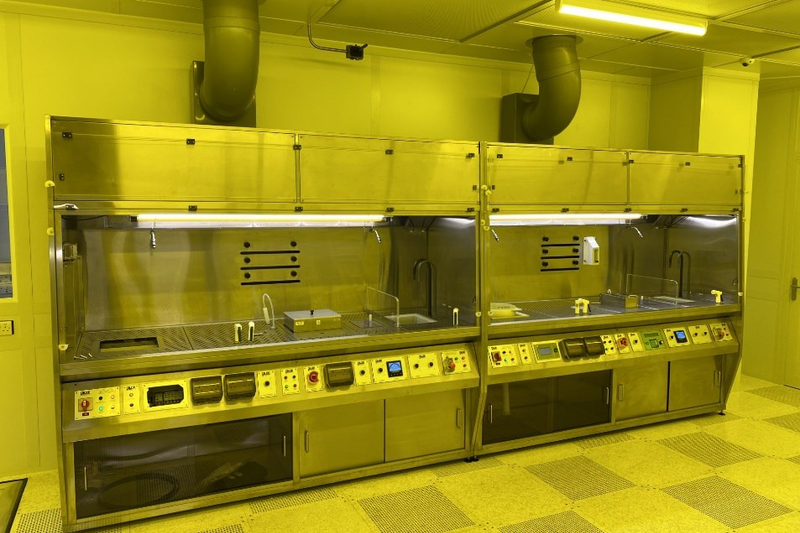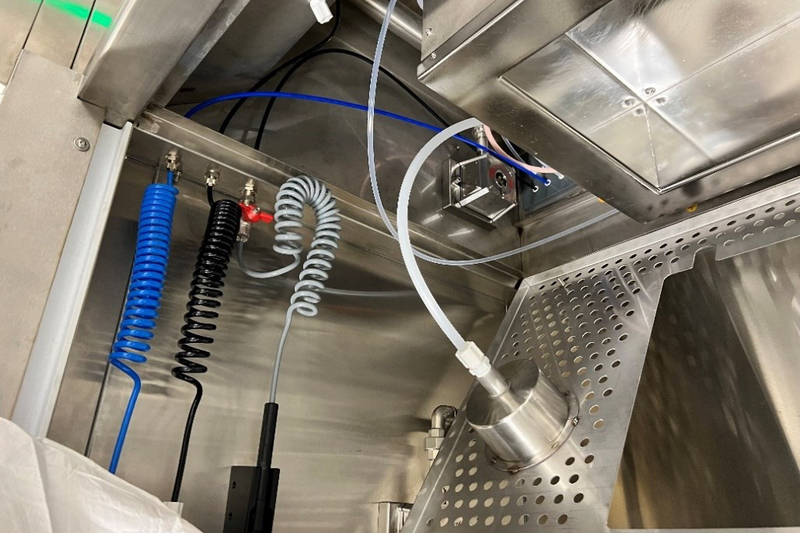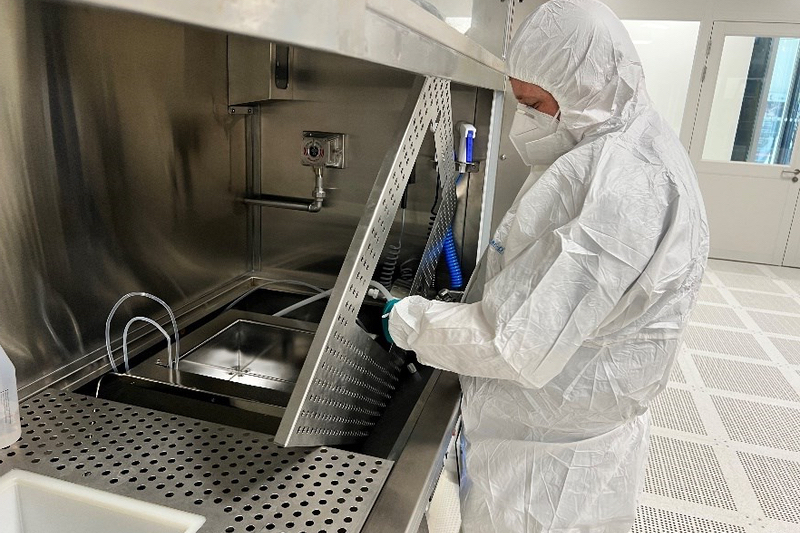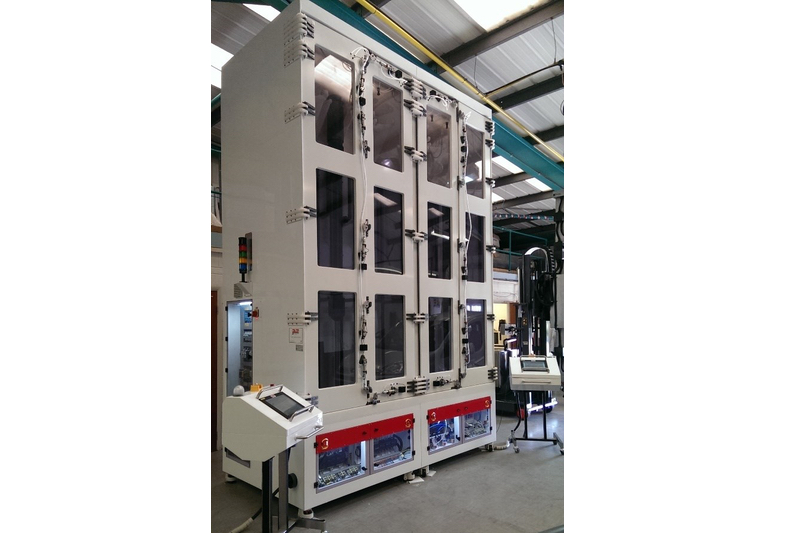In high-tech manufacturing and scientific research, cleanrooms are crucial. They are necessary in environments where tiny particles can negatively impact the manufacturing process.
Cleanrooms create a controlled environment that is free of dust, airborne microbes, aerosol particles, and chemical vapours.
Certain cleanroom equipment, including chemical wet stations, require a clean-down procedure that matches the final location
However, setting up a cleanroom comes with its challenges, especially during the installation of cleanroom equipment. Curious to learn about the daily challenges the Felcon team encounters?
Preparations are underway at the Felcon factory. During the design stage, one of the primary challenges is to ensure that all pieces of equipment are compatible with each other and can be seamlessly integrated into the cleanroom's design.
We work closely with the cleanroom manufacturing contractors to fulfil the required standards and ensure the integrity of the entire cleanroom (the room and equipment). This requires meticulous planning and coordination, as any errors or delays can lead to increased costs and project setbacks.

Figure 1: Felcon Solvent Wet Processing Workstation
Cleanroom equipment must meet strict cleanliness standards, which can be challenging during the installation process.
Depending on the type of equipment and its final location, cleanroom equipment is usually double-wrapped before dispatch
The equipment itself, as well as the installation procedures, must not compromise the cleanroom's controlled environment. To ensure this, it must be included in the production and packaging process.
Certain cleanroom equipment, including chemical wet stations, require a clean-down procedure that matches the final location, such as fabs, which have strict contamination control protocols.
The construction of any process station begins with contamination-laden processes, especially in solvent-biased stations built from stainless steel (Figure 1). This is unavoidable.
Therefore, Felcon cleanroom equipment undergoes a continuous cleaning procedure from each department to the final packing and wrapping procedure before dispatch.
Large equipment like quartz tube washers must be accommodated without compromising the room's layout or workflow
Depending on the type of equipment and its final location, cleanroom equipment is usually double-wrapped before dispatch.
Once the cleanroom equipment has been delivered to the factory, the equipment must be offloaded and moved to an internal and dry location with controlled temperature and humidity (excessive temperatures and/or humidity may damage the equipment).
The equipment must be handled off the pallet (if used) as well. The equipment must then be transported into a contamination-controlled location to remove one of the layers of protective packing. The equipment is then moved to the final point of use or near to it.
Some cleanroom equipment will then require re-assembly depending upon size and shape etc. and dependent upon the condition of the final location (Figures 2 and 3). Cleanrooms and their equipment are subject to various regulations and standards.
Some cleanroom equipment will then require re-assembly depending upon size and shape
Ensuring that all installed equipment complies with these regulations is crucial for the cleanroom to be operational and certified. Felcon personnel will follow the appropriate customer cleanroom protocols.
Depending upon site conditions and room protocols the first stage (inner) packing is then removed and must be disposed of in accordance with cleanroom’ procedures. It is important to be aware that there will still be a need for a final cleaning procedure.

Figure 2: Felcon engineer checks the plenum of the wet bench to make sure everything will meet cleanroom standards

Figure 3: Felcon engineer makes the final steps at the installation.
Space is often at a premium in cleanrooms. Large equipment like quartz tube washers must be accommodated without compromising the room's layout or workflow (Figure 4). This usually means that equipment must be placed in the cleanroom before the final construction of the containment structure.

Figure 4: Felcon Tube washer- big change for cleanroom equipment installation
The cost of cleanroom equipment and its installation can be significant. Balancing the budget while ensuring quality and compliance is a constant challenge for project managers.
The installation of cleanroom equipment requires specialised knowledge and training. Finding personnel with the necessary expertise can be a challenge, and improper installation can lead to equipment malfunction or contamination.
Felcon is a global technology company that has been providing cutting-edge solutions since 1971, including cleanroom equipment specialist installation. Our products and services such an installation are designed to help businesses and individuals thrive in the digital age.
As the demand for cleanrooms continues to grow, so does the importance of mastering these installation challenges
Conclusion
The installation of cleanroom equipment involves a complex interplay of factors, from maintaining cleanliness standards to managing costs.
It requires a well-thought-out strategy, attention to detail, and a team of skilled professionals to overcome these challenges and ensure a successful setup.
As the demand for cleanrooms continues to grow, so does the importance of mastering these installation challenges.

